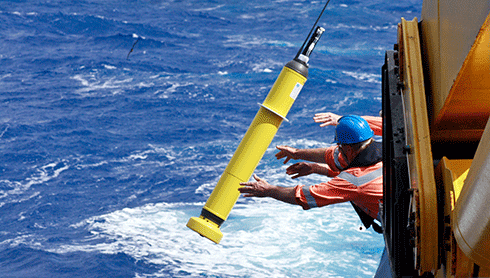
|
Published: 13 October 2014
Southern Hemisphere ocean warming underestimated: new research findings
Combining satellite observations with a range of climate models, US scientists have found that long-term ocean warming in the upper 700 metres of Southern Hemisphere oceans has likely been underestimated due to earlier technical limitations.
‘This underestimation is a result of poor sampling prior to the last decade and limitations of the analysis methods that conservatively estimated temperature changes in data-sparse regions,’ said Lawrence Livermore National Laboratory oceanographer, Paul Durack, lead author of the study, reported in the journal Nature Climate Change.
Ocean heat storage is important because it accounts for more than 90 per cent of the Earth's excess heat associated with global warming. The Southern Hemisphere oceans make up 60 per cent of the world's oceans.
The team found that climate models simulating the relative increase in sea-surface height between Northern and Southern hemispheres were consistent with highly accurate altimeter observations. However, separating the simulated upper-ocean warming in the Northern and Southern hemispheres was inconsistent with observed estimates of ocean heat content change.
These sea level and ocean heat content changes should be consistent, and suggest that until recent improvements occurred in the observational system used in the early 21st century, Southern Hemisphere ocean heat content changes were likely underestimated.
Since 2004, automated profiling floats (named Argo) have been used to measure global ocean temperatures from the surface down to 2000 metres.
The 3600 Argo floats currently observing the global ocean provide systematic coverage of the Southern Hemisphere for the first time. Argo float measurements over the last decade, as well as data from earlier measurements, show that the ocean has been gradually warming, according to Durack.
‘Prior to 2004, research has been very limited by the poor measurement coverage,’ he said.
‘By using satellite data, along with a large suite of climate model simulations, our results suggest that global ocean warming has been underestimated by 24 to 58 per cent.
‘The conclusion that warming has been underestimated agrees with previous studies; however it's the first time that scientists have tried to estimate how much heat we've missed.’
Given that most of the excess heat associated with global warming is in the oceans, this study has important implications for how scientists view the Earth's overall energy budget, Durack said.
The new results are consistent with another new paper that appears in the same issue of Nature Climate Change. Co-author Felix Landerer of NASA's Jet Propulsion Laboratory, who contributed to both studies, commented, ‘Our other new study on deep-ocean warming found that from 2005 to the present, Argo measurements recorded a continuing warming of the upper-ocean. Using the latest available observations, we're able to show that this upper-ocean warming and satellite measurements are consistent.’
Source: Lawrence Livermore National Laboratory




